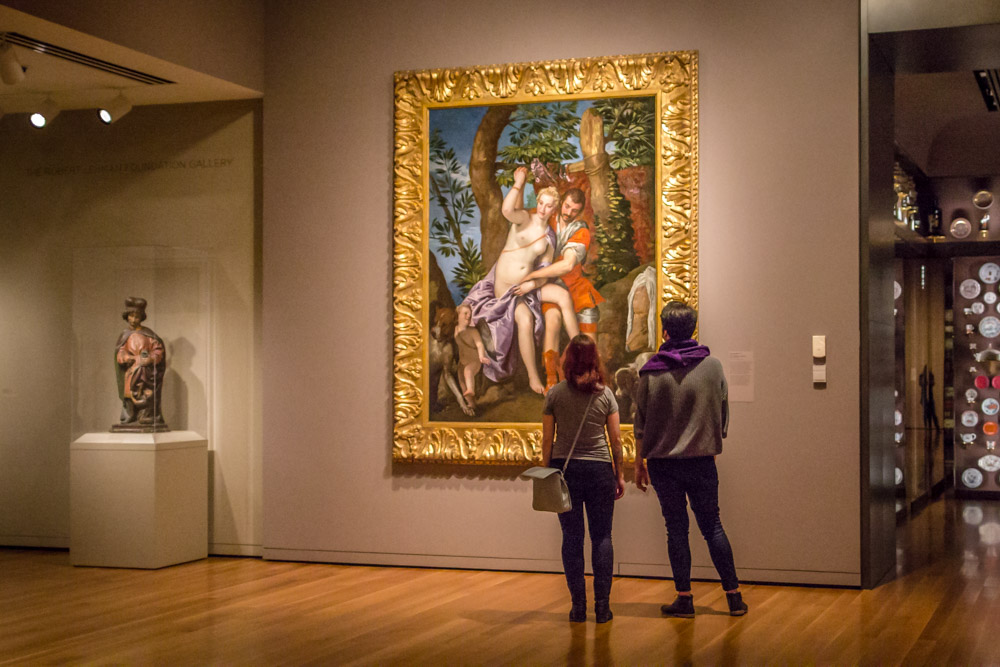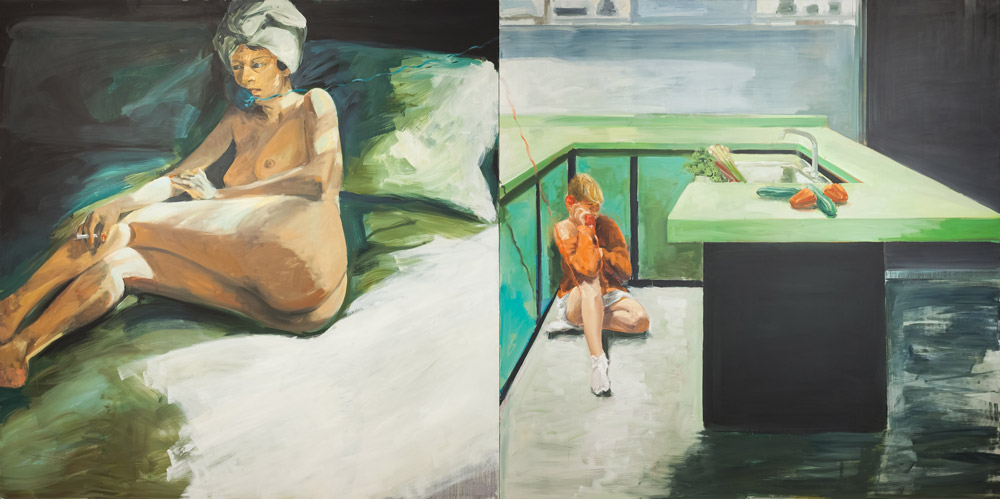Object of the Week: Salad Days
Giving tours to young people through our big Jane Lang Davis Gallery in the Modern and Contemporary collection can be difficult. It’s impossible to avoid the fact that there’s a really large painting of a naked woman on the wall! Even if, as the tour guide, one forgets about it momentarily, kids will always bring the attention straight to that piece. Their stifled laughter, or even outright laughter, will probably derail conversation about anything else happening in the gallery. Once my focus is drawn to it, I feel simultaneously uncomfortable and totally compelled by the image. I get why they’re staring and pointing.
There’s a name for the painting with the naked woman: Salad Days. She’s just one half of a two-panel piece that measures seven by fourteen feet, rendering relational discord on a huge scale. The artist is contemporary American painter Eric Fischl. He has been creating uncomfortably naked paintings since the early 1980s, and there are few artists out there who do it better, or with more unsettling creep factor.
Fischl has described himself as a storyteller, an artist who aims to create scenes that are full of meaning. Whether that meaning is positive or negative does not matter to him; whether the viewer’s senses are offended does not matter either. Instead, he’s interested in radical openness and honesty. Many of Fischl’s paintings focus on awkward territory: enduring down time in an unhappy relationship, singing in the shower, or lounging unceremoniously in the buff. Over and over, he confronts viewers with scenes that are unusual for their bare honesty.
Of course there’s a very long history of naked people in art, and Fischl is hardly the first, last, or only artist to engage the subject. Most of these artists are working in one of two traditions: nude art, or naked art. The nude is an idealized figure, on display for the viewer, situated in a context that justifies, or makes more art history appropriate, the lack of clothes. Nakedness is all about the lack of clothes and flying in the face of propriety. Fischl fits squarely in the naked camp.

SAM’s collection has great examples of the nude genre too…
Salad Days pictures a private moment, and in doing so, turns it into something highly public. The woman’s physical nakedness comes to represent a psychological nakedness, where her private thoughts and actions come to the surface. This, like much of Fischl’s work, is a voyeuristic, intimate vignette—not an idealized display set up for our consumption. Imagining two sides of a conversation happening over the phone, he invites us to imagine how others act when we can’t see them. You’ll be thinking about it the next time you’re on a call…
